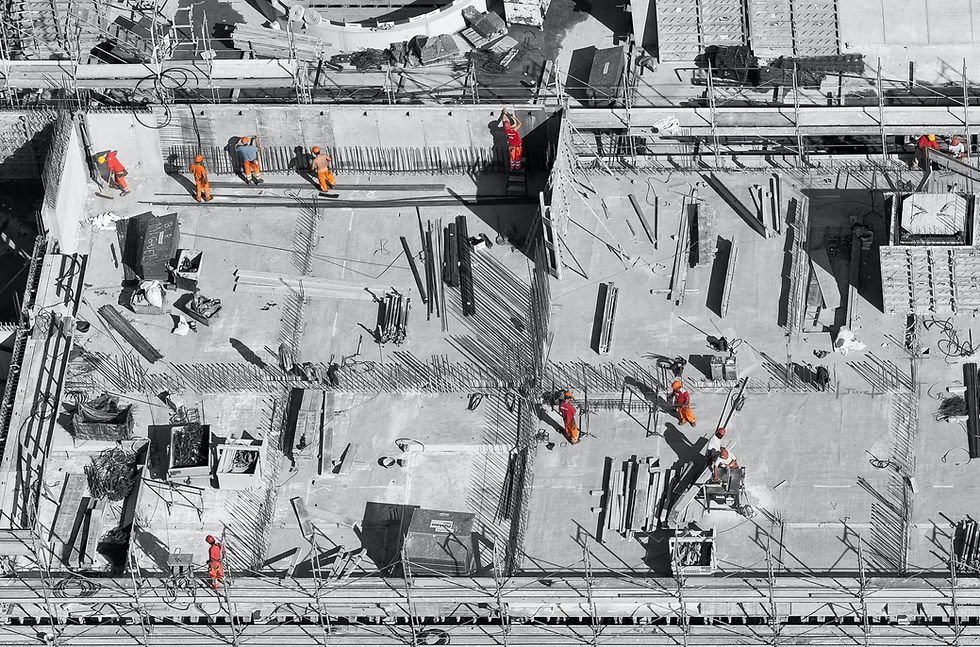Helsinki Region’s circular economy is built together
- CIRCuIT
- Jul 28, 2021
- 3 min read
Updated: Jul 29, 2021
By Jenni Nieminen

More than 100 industry experts gathered at Helsinki Regions’ last local network event, hosted virtually by HSY and the Finnish Green Building Council (FIGBC), to network and to hear updates on current CIRCuIT project activities, as well as research topics including the most commonly demolished building types, and how to quantify building material flows and reserves on a city level. The event also provided an opportunity to introduce other innovative circular projects such as ICEBERG, a project that aims to cultivate innovative solutions for an upgraded recovery of raw secondary building materials, and ReCreate, an international project coordinated by Tampere University enabling the reuse of precast concrete building elements.
To kick-start the event, representatives of Helsinki, Espoo and Kerava cities provided an overview of the most exciting circular construction examples so far implemented in Helsinki Region, including the launch of a circular cluster program by the City of Helsinki aimed at developing, testing and deploying circular construction solutions to share across their construction networks. Kera, the rail hub in Espoo, was also spotlighted as a neighbourhood development project making real strides: as part of the area’s transformation into an urban walking and cycling-oriented residential centre, they will also be championing circular construction approaches – particularly through their reuse and temporary use of old buildings in the area.
In each of these examples, co-operation was shown as an essential part of bringing circular initiatives to life.
Renovation and modification of existing building stock was also a major part of the next presentation: Mario Kolkwitz, from the Helsinki Region CIRCuIT cluster, shared research results on what type of buildings are demolished most in Vantaa, showing that offices and warehouse buildings are the most common types of buildings under threat of demolition. Tapio Kaasalainen, also from the Helsinki Region CIRCuIT cluster, then reinforced that with feedback from a study quantifying building material flows and reserves in the city. This type of data provides crucial information about the scale and type of potentially reusable building components in the event of buildings having to be demolished rather than renovated.
Reuse was the next conversation topic: Petri Salmi from Spolia design Oy presented statistics about the market for reuse of building materials, showing that it is still unfortunately almost non-existent. For example, concrete element recycling rate is 99 % (for concrete rubble), but only 0.01 % is being reused in Finland. The challenge here is to get developers and real estate investors committed and agreeing on concrete targets before they start knocking buildings down, so that reuse can be properly planned and materials handled appropriately.
Helsinki Metropolitan Area Reuse Centre has piloted different ways to direct movable property and fixtures from demolition sites into reuse. Jenni Särmä from the CIRCuIT project showed in the pilots’ findings that the most essential thing is to organize a separate audit of movable property and fixtures before demolition – and to make sure that any safety and responsibility issues are resolved in advance if customers are allowed to access the site and detach fixtures themselves. Digitalisation would also help things along, e.g. a digital marketplace for any items and materials being sold.
This spring, the CIRCuIT project’s hackathons in Helsinki Region set a number of teams the challenge of reusing materials from precast concrete materials, and Markku Raimovaara from HAMK took the network audience through some of the inspiring responses from those taking part.
Most of the construction and demolition waste in Finland is concrete and stone waste and a significant source of this waste is precast concrete buildings from the 1960s to the 1980s. The winning team’s idea was of a loft house built from reused modular concrete elements; and Tampere University’s ReCreate project will now keep working to deepen our knowledge on how to reuse precast concrete building elements, examining the technologies, business models and legislation required to make it easier and looking at the environmental impacts of doing so.
Finally, Henna Teerihalme from Helsinki Region CIRCuIT cluster presented the online tools that are currently under development as part of the project, and the webinar participants contributed their own ideas and needs to help us help them more effectively. Henna talked through the project’s ‘Circularity hub’, which includes the City Circularity Atlas, a circularity dashboard for metrics monitoring, a Wiki, the new citizen engagement portal and a materials exchange portal.
More info on the circularity hub can be found here: https://www.circuit-project.eu/circularity-hub
For Finnish speakers, more information on the topics discussed and a recording of the event can be found in FIGBC’s blog post: https://figbc.fi/paakaupunkiseudun-kiertotalous-rakentuu-yhteisvoimin/





Comments